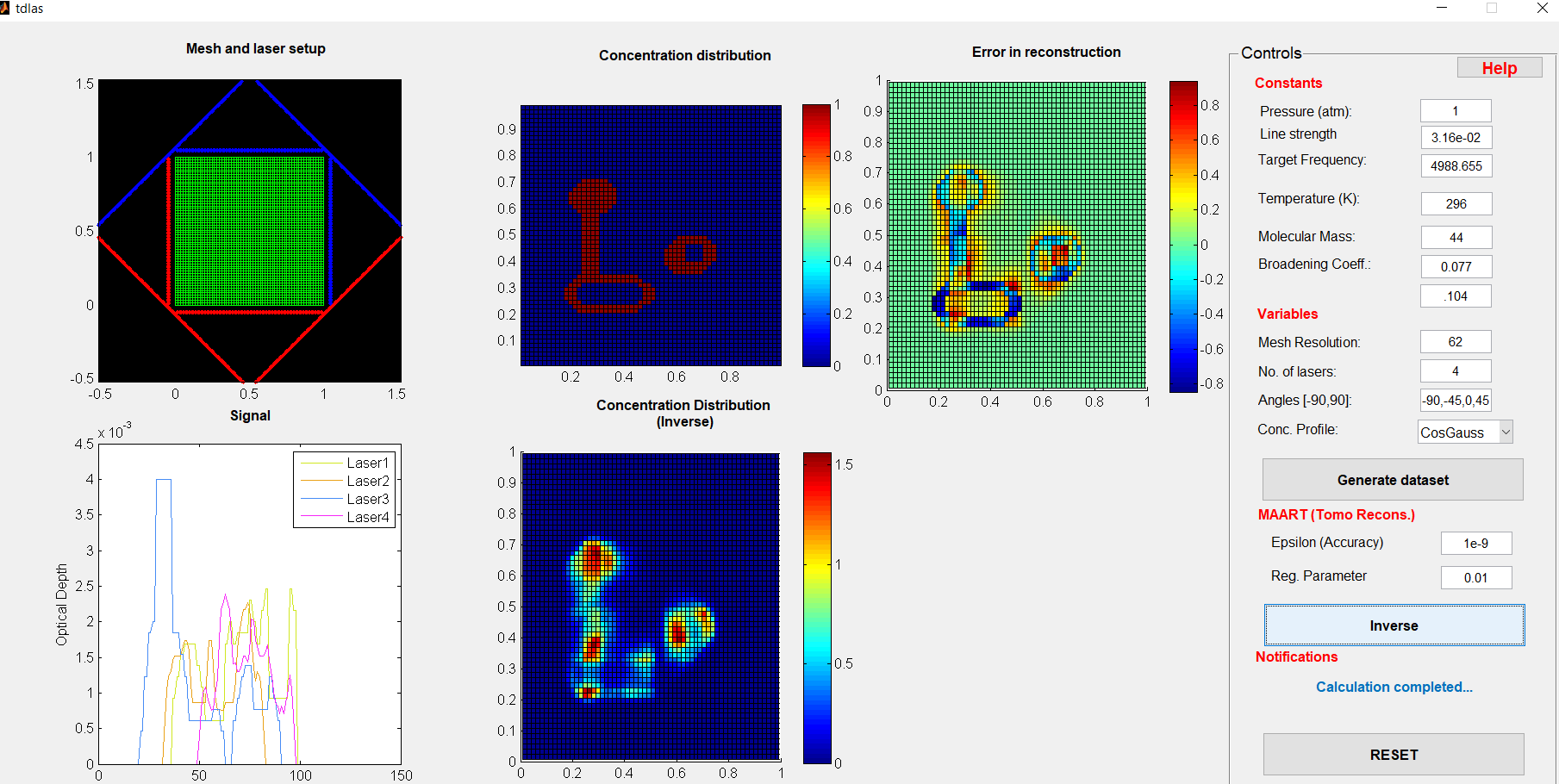
Tomographic Reconstruction based on Tunable Diode Laser Absorption Spectroscopy
I had the opportunity to travel to Germany after my 3rd year and work with the Environment Modeling & Sensing Group in the Department of Computer and Electrical Engineering, Technical University of Munich.
Languages:
- MATLAB
The most relatable example for a tomographic reconstruction is the X-Ray machines. X-Ray machines contains lasers (emitter-detector pair), where the emitter shoots laser at the object of interest and the change in the energy level is measured by the emitter.
More specifically, this same concept can be used to quantify the concentration of carbon dioxide in a region. The lasers are used to measure difference in the energy level, which is used to compute concetration of the gas using Beer-Lambert Law. Tomographic Reconstruction is the process of computing the distritbution of the gas in the region of interest using these laser readings. This is an ill-posed inverse problem as the number of lasers is always less than the number of unknowns because of they are extremely expensive.
This was a totally new area for me and I surveyed the problem of ill-posed inverse in mathematics. I studied different reconstruction algorithms such as Algebraic Reconstruction Technique (including variants such as MART, MAAART), Tiknonov Regularization, and implemented these in Matlab. In addition, I packaged the code as a GUI platform, which consisted of various features such as pre-processing, solver, post-processing.